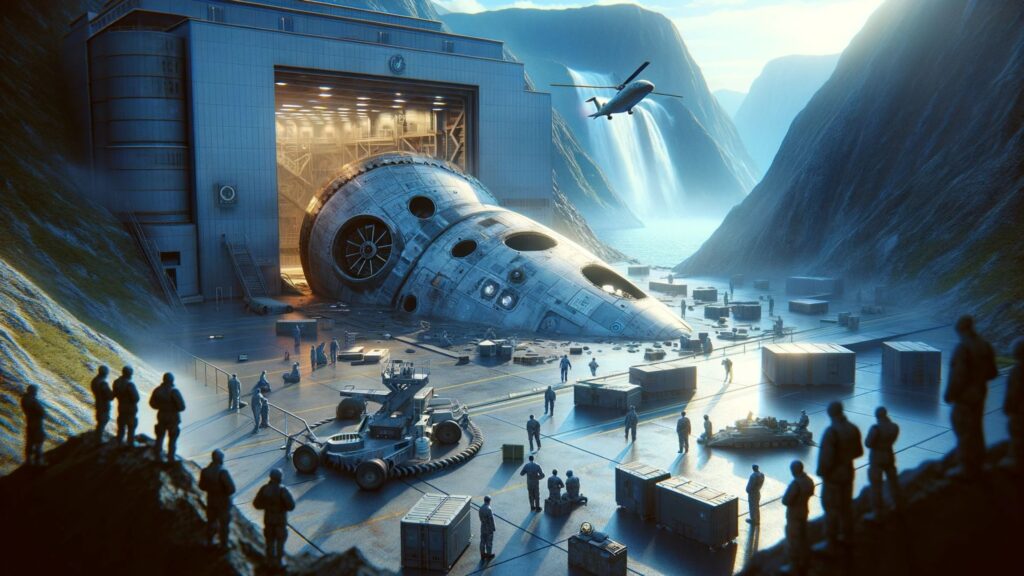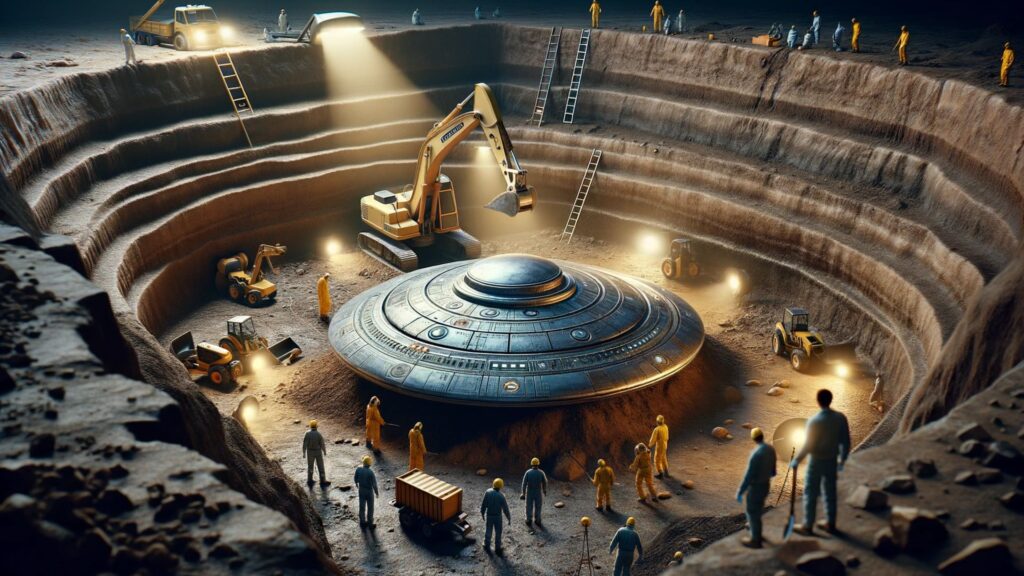Initial Skepticism
Initial Reactions to UAP Literature: Historically, the study of Unidentified Aerial Phenomena (UAPs) has been met with skepticism due to the lack of empirical rigor and theoretical clarity in much of the related literature. The author shares a sense of dismissiveness towards the subject, stemming from its divergence from academic standards.
Recent Developments
Shift in Perception: In recent years, there has been a significant shift in the perception of UAPs. The release of the Pentagon UFO videos in 2017, showing aircraft performing extraordinary maneuvers, has reignited interest and called for a reevaluation of the phenomenon.
Official Acknowledgments and Testimonies: The U.S. Department of Defense’s official recognition of these videos and the subsequent testimonies of military personnel under oath to Congress have added substantial credibility to the existence of UAPs. These developments suggest that UAPs display capabilities beyond current human technology, challenging conventional understanding and inviting more serious academic inquiry.
UAPs in Recent Years: A Shift in Perspective Through Evidential Grounding

Pentagon UFO Videos and Military Testimonies
The emergence of the Pentagon UFO videos in 2017 marked a pivotal moment in the study of UAPs. These videos, captured by infrared cameras on military aircraft, revealed unidentified flying objects performing maneuvers that defied conventional aerodynamics. Their release to the public sparked widespread interest and debate, transcending the previously fringe status of UAP discussions.
Sworn Testimonies and Unprecedented Maneuvers
Adding to the intrigue, U.S. Navy pilots and other military personnel involved in these incidents provided detailed, sworn testimonies to Congress. Their accounts described the UAPs’ movements as deliberate, intelligent, and seemingly impossible by known laws of physics. Such testimonies, coupled with the Pentagon’s confirmation of the videos’ authenticity, brought a new level of seriousness to the conversation, challenging our understanding of aerial phenomena and the potential for non-human intelligence.
UAP Crash-Retrieval Programs: Unveiling the Layers of Mystery

The narrative around UAPs took a more intriguing turn with revelations about secretive government programs dedicated to the retrieval and reverse-engineering of crashed UAPs. These disclosures, coming from credible sources within the military and intelligence communities, hinted at a deeper layer of engagement with UAPs than previously acknowledged.
David Grusch, a former United States Air Force officer, stepped forward as a whistleblower, confirming the existence of these programs and their focus on technology with a non-human origin. His and others’ testimonies in congressional hearings brought forth the possibility that the U.S. government possesses physical evidence of non-human intelligence, dramatically reshaping the conversation around UAPs and their implications for human understanding of technology and life beyond Earth.

The revelation of UAPs has created a unique cultural and scientific stalemate. Despite the groundbreaking nature of recent disclosures and testimonies, the data available to the public remains meager, preventing any firm conclusions about the nature of these phenomena. This limited data has led to a situation where UAPs can neither be fully explained by existing scientific knowledge nor dismissed as mere fantasies.
Consequently, there is a growing call within the scientific community and beyond for a balanced approach. This approach involves taking the available data on UAPs seriously while refraining from overreaching conclusions that lack empirical support, thus maintaining scientific rigor in a field fraught with uncertainty and speculation.
Non-Human Technology and Intelligence: Rethinking Origins and Possibilities

In the evolving discourse surrounding UAPs, a central focus has been the nature and origin of the technology behind these phenomena. The advanced capabilities observed in UAPs, such as propulsion systems that defy current scientific understanding, suggest that they are not of human origin. This realization has led to the formulation of hypotheses that challenge the traditional extraterrestrial origin theory.
These hypotheses propose that the technology and intelligence behind UAPs might be terrestrial but non-human, originating from a previously unknown or unacknowledged source on Earth itself. This perspective broadens the scope of inquiry beyond the search for extraterrestrial life, encouraging a more comprehensive exploration of our planet’s own mysteries and unexplored potential.
Historical Consistency of UAPs: Tracing the Ancient Threads

The phenomenon of UAPs is not a recent development but has a deep-rooted presence in human history. Ancient mythologies and religious texts from various cultures contain narratives that strikingly resemble modern UAP observations. These historical accounts suggest that the phenomena we now classify as UAPs have been witnessed and recorded for millennia.
This consistency over time challenges the extraterrestrial hypothesis and gives rise to the terrestrial origin theory. This theory posits that the UAPs might be linked to an ancient, advanced civilization on Earth, offering a compelling perspective that intertwines the UAP phenomenon with the mysteries of our own planet’s past.
Differentiating UAP Phenomena: Understanding the Varied Manifestations

In examining UAPs, it’s essential to distinguish between two primary types of encounters. The first, often referred to as ‘nuts-and-bolts’ UAPs, involves physical crafts that exhibit consistent characteristics and can be observed, filmed, and tracked using radar technology. These UAPs, typically observed near military installations, suggest a physical, tangible presence.
In contrast, ‘high strangeness’ events encompass encounters that occur in more ordinary settings, like bedrooms or during commutes. These events are characterized by their elusive nature, often involving symbolic, dream-like experiences rather than clear physical manifestations. This differentiation is crucial to understanding the diverse nature of UAP encounters and avoiding the conflation of potentially distinct phenomena.
The Ultra-Terrestrial Hypothesis: Exploring Ancient, Advanced Terrestrial Civilizations

The Ultra-Terrestrial Hypothesis offers a compelling perspective on the UAP phenomenon. It suggests the possibility that remnants of an ancient, advanced civilization on Earth, predating known human history, could be responsible for the UAPs observed today.
This hypothesis draws on the concept that such a civilization, perhaps akin to the Atlantis myth, might have survived cataclysmic events from the last ice age and continued its existence discreetly. The idea challenges traditional views by proposing that the intelligence behind UAPs is not only terrestrial but also ancient, originating from a civilization that once thrived on Earth.
Geological and Environmental Considerations: Delving into the Silurian Hypothesis

The Silurian Hypothesis, a key component in understanding the potential terrestrial origin of UAPs, posits that Earth’s long geological history could have hosted other advanced civilizations before humans. This hypothesis addresses the absence of physical evidence for such civilizations, suggesting that geological processes like weather erosion and plate tectonics would likely erase any significant traces over millions of years.
This perspective not only expands the scope of our search for intelligent life but also highlights the transient nature of civilizations and their impacts on the planetary environment, offering a broader context for interpreting UAP phenomena.

Communicating with Non-Human Intelligences (NHIs) presents unique challenges due to fundamental differences in cognitive structures and modes of expression. Unlike human languages, which rely on shared cognitive templates and empirical references, communication with NHIs would likely involve symbolic and metaphorical forms.
This form of communication transcends literal language, requiring an understanding and interpretation of symbolic messages that may be vastly different from human logic and experience. Such a mode of communication underscores the complexity of engaging with intelligence that does not share a common cognitive framework with humans.
Conclusion: Embracing the Complexity and Intrigue of the UAP Phenomenon

The exploration of UAPs has unraveled a tapestry of complexity and intrigue, challenging our understanding of the world and the universe. From the technological marvels of unidentified crafts to the potential existence of ancient terrestrial civilizations, the UAP phenomenon invites us to reconsider our place in the cosmic narrative.
It underscores the need for open-mindedness in scientific inquiry and cultural understanding, reminding us that the universe still holds mysteries far beyond our current comprehension. As we continue to probe the depths of this phenomenon, we may find ourselves not only uncovering the secrets of UAPs but also redefining the boundaries of human knowledge and imagination.
